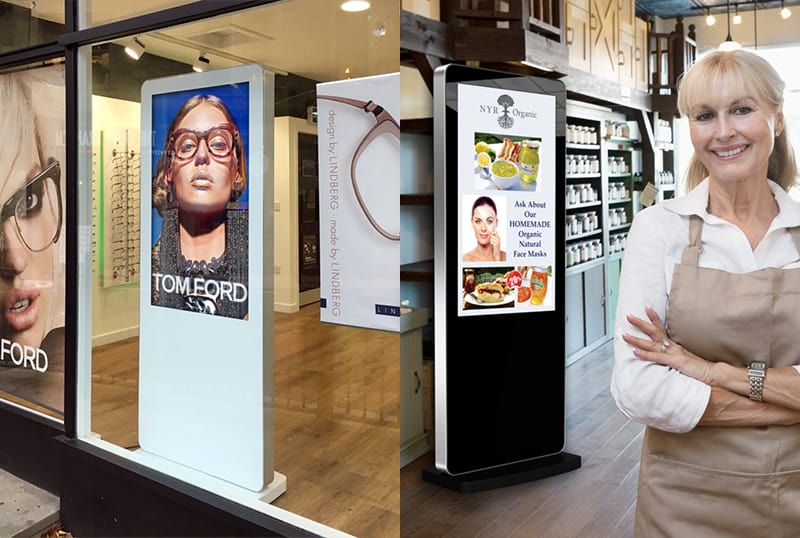
Digital Signage: Plug and Play vs Network
Choosing whether to network your Digital Signage display or update it via USB plug and play affects the way your Digital Signage display is used greatly. We are asked many a time for which is the better solution. Now there is no definitive answer to this question as they both have their advantages. If you are looking at purchasing an all-in-one Digital Signage solution, I hope this article can help you decide if you need a standalone plug and play or a network solution.
Choosing to update via plug and play can also be referred to as a standalone solution because at Digital Signage’s most simplest form, that is what it is; a standalone Digital Signage screen that does not require any outside hardware or software to operate and no internet connection either. Your content, such as images and videos, are simply loaded onto a blank USB and inserted into the display. The media player inside your Digital Signage display will then immediately copy your content, once the USB is removed your images and videos will then play in a continuous loop and that is it! Now due to the actual process of the USB needing to be physically inserted and removed from the display by a user, this kind of solution is great for locations with a smaller amount of displays (an independent boutique or a franchise restaurant for example). If you have a large number of screens spread across multiple locations this kind of solution is not ideal. Do you send one person with a USB stick across all the locations every time the content needs to be updated? Or do you send a single USB stick to every location? The logistics in this situation can get very complex indeed making this simple solution somewhat difficult to implement.
Choosing the network route allows you to truly unlock the potential of your Digital Signage displays. Updating your Digital Signage displays via a network can also be relatively straightforward. By simply connecting your screen to the internet and logging into an online CMS, you can upload your own content and send it via the cloud to multiple Digital Signage displays across the world in a matter of seconds. Network Digital Signage allows you to create your own templates for content with multiple media zones, so you can have your images and videos alongside live websites, RSS feeds and even widgets showing the time, date and weather all on one screen. This kind of functionality is only available with network Digital Signage displays and is the only noticeable difference that viewers will be able to tell between whether your screen is a standalone or networked display. You ultimately get much more control over your display used with an online CMS, with user reports, publishing records and even the ability to receive screenshots of what is displaying live on screen. All these kind of impressive features come at a cost though, usually by a subscription per screen. Depending on the size of your Digital Signage network this can be a big expenditure but can be worth it in the long run.
When choosing between the two for your project there is one more point to consider. Our Queen’s Award winning Digital Signage displays have the ability to upgrade from a ‘standalone’ solution to a ‘network’ solution seamlessly without the need for any additional hardware or software. This kind of functionality is unique to our displays. So if you were to initially buy a single standalone Digital Signage display for one shop, then purchase more screens for various locations across the country over the next few years, all you would need to do is pay an upgrade fee and change the settings on the displays and voila the screens are networked. The capability to upgrade and downgrade between the two means that there is really no wrong choice you can make. Our Digital Signage displays are future proof, scalable and extremely cost effective; so with that in mind you can concentrate on making your Digital Signage a success now.

Tom Rock is a Marketing Manager for Allsee Technologies. His background is in Digital Signage and Graphic Design.


